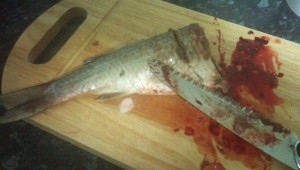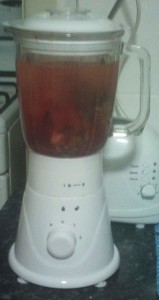Fish fertilizer works in a number of ways. It feeds the plants and also feeds the soil microbes. Plenty of gardeners swear by it. Thing is it costs a bit in the store to buy. I have used it on plenty of occasions but have never made it myself.
Your own Home Made Fish Fertiliser
Yesterday I bought a fish. It was a sea mullet and was priced at $2 per kilo. The fish was whole and ended up costing $1.75 so it was under a kilo (2.2 lb).
The process I use produces a fish hydrolysate, or it is supposed to. It takes between 3 and 5 weeks for the process to work. The first time I saw it was around glasshouses owned by Vietnamese farmers. They used to make their own fish fertilizer for their crops. The only way to tell when the process has completed is by the smell. During the process the smell is bad but when it is completed there will be no odour or a faint earthy vinegar smell that is not at all unpleasant.
So I had my fish, now I had to mince it up. The more minced up the better. On my previous shopping expedition there was a food blender at Woolies for $29. Just the ticket.
Taking my trusty Silky Pocket Boy I cut the mullet into 50mm chunks and put the lot into the blender. I added about a litre of water. It is better to use filtered water or let the water stand overnight to dissipate the chlorine as chlorine kills microbes. We are using the microbes and enzymes in the gut of the fish to break down the fats and protein in the fish to amino acids and plant available protein, we don’t want to kill them with the water we use. Around 400 grams of raw sugar was added and around 150ml of lactobacillus solution I had left over from a batch I made.
After blending the lot to get it broken down as much as possible, I placed it in one of my trusty 4 litre ice cream containers and stored it in the shed to let the microbes and enzymes do their thing.
Costs so far if I don’t count the blender
Fish 1.75
Raw Sugar 0.40
LactoBacillus 0.20
Total 2.35
After straining the hydrolysate I will have around 1.5 litres of concentrated home made fish fertiliser that will be used at a diluted rate of around 2 tablespoons for 4 litres of water. When you dilute it for soil drenching or foliar spraying make sure you use water that has been left standing for 12 hours so that the chlorine can evaporate off.
I will update this when it has completed the process.



